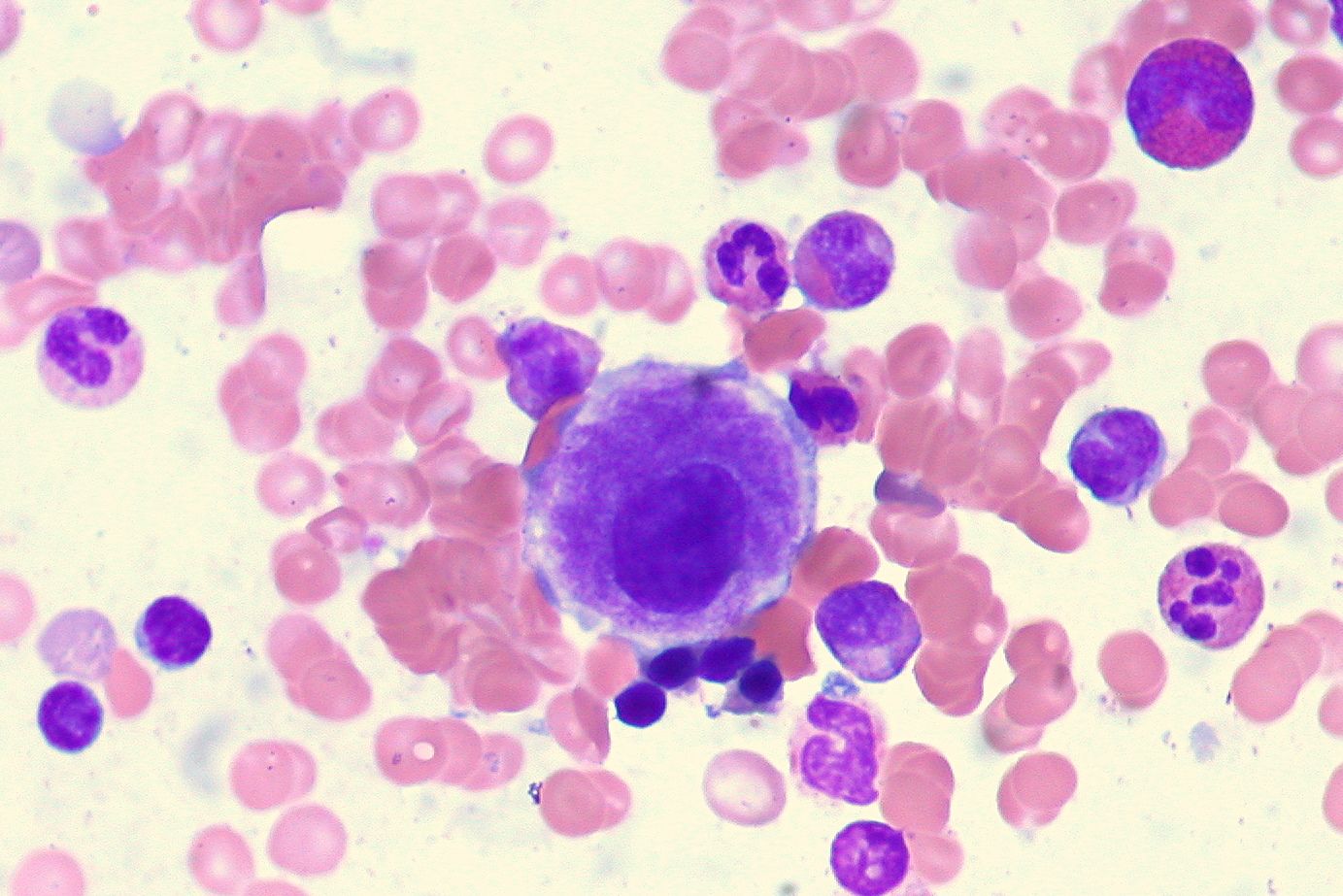PD-L1 Expression Confers Worse Myelodysplastic Syndrome
Patients with dyserythropoiesis appear to have higher PD-L1 expression than those without in a study population of those with myelodysplastic syndromes.
"We believe that the PD-L1 expression data presented here in our cohort were associated with worse prognosis markers, such as the dyserythropoiesis and its worst subtype, [MDS with an excess of blasts 2]," according to the study authors.

Investigators reported that a higher level of PD-L1 expression correlated with a worse prognosis in those with myelodysplastic syndrome (MDS), according to findings from a study published in Hematology, Transfusion, and Cell Therapy.1
The median PD-L1 expression in patients with dyserythropoiesis was 3.740 x 10–4 (95% CI, 0.000413284-0.000889361) compared with 1.762 x 10–4 (95% CI, 0.000085460-0.000579451) in those without dyserythropoiesis (P = .050). Investigators noted 3 patients who were outliers in the dyserythropoiesis analysis all of whom were all over 60 years old; had blasts of 8.5%, 12.0%, and 14.0% in the bone marrow; hemoglobin levels below 8 g/dL; and dysplasias. Of these patients, 2 had no metaphases, and 1 presented with a complex karyotype; all died during the study.
Patients with an excess of blasts 2 had a mean PD-L1 expression of 9.653 x 10–4 (95% CI, 0.000177820- 0.001752955) compared with a mean expression of 2.944 x 10–4 (95% CI, 0.000144278- 0.000444522) in patients with an excess of blasts 1 (P = .050).
According to a survival analysis performed via Kaplan-Meier method, patients with the worst prognosis experienced a median survival of 14 months (95% CI, 1.0-34.8), whereas other patients in the study had a median survival of 44 months (95% CI, 32.3-55.6; P = .018). In an analysis of PD-L1 expression with respect to other clinical variables such as age, blasts, and hemoglobin levels, investigators identified no statistically significant correlations.
“We believe that the PD-L1 expression data presented here in our cohort were associated with worse prognosis markers, such as the dyserythropoiesis and its worst subtype, [MDS with an excess of blasts 2],” the study authors wrote. “We speculate that the increase in PD-L1 levels after using hypomethylating agents [HMAs] is one of the factors responsible for the loss of response to this treatment. An initial combination of HMAs with PD-L1 inhibitors should be tested in clinical trials.”
The study population included a total of 53 patients who were diagnosed with MDS according to World Health Organization 2016 classification and evaluated per the Revised International Prognostic Scoring System (IPSS-R). A control group included 4 bone marrow samples collected from healthy volunteers.
Of the assessed patients, 8 had single lineage dysplasia with multilineage dysplasia, and 17 had MDS with excess blasts. The mean patient age was 68 years (range, 28-89). Additionally, 58.5% of patients were male, and 31.7% had low-risk disease according to IPSS-R criteria. Results from cytogenetic evaluation indicated that 42.3% of patients had a normal karyotype, 36.5% had an abnormal karyotype, and 21.2% had no metaphases.
“Studies suggest that tumors with defects in DNA repair pathways present a higher expression of the PD-L1 due to the context of genomic instability that favors the generation of neoantigens and, consequently, activation of the INF and PD-L1,” the study authors wrote.2,3 “Possibly, targeting anti-PD-L1 therapies to patients with MDS who have cytogenetic abnormalities and a high mutational load, particularly in DNA repair pathways, are more susceptible to a positive therapeutic response.”
References
- Sampaio LR, de Aguiar Viana M, de Oliveira VS, et al. High PD-L1 expression is associated with unfavorable clinical features in myelodysplastic syndromes. Hematol Transfus Cell Ther. Published online June 5, 2023. doi:10.1016/j.htct.2023.05.002
- Sato H, Niimi A, Yasuhara T, et al. NA double-strand break repair pathway regulates PD-L1 expression in cancer cells. Nat Commun. 2017;8:1751. doi:10.1038/s41467-017-01883-9
- Permata TBM, Hagiwara Y, Sato H, et al. Base excision repair regulates PD-L1 expression in cancer cells. Oncogene. 2019;38:4452-4466. doi:10.1038/s41388-019-0733-6
Pelabresib/Ruxolitinib Improves SVR35/TSS Outcomes in Myelofibrosis
December 12th 2023The combination of pelabresib plus ruxolitinib shows improvement in hemoglobin response in the MANIFEST-2 trial, supporting a potential shift in the future treatment of patients with JAK inhibitor–naive myelofibrosis.